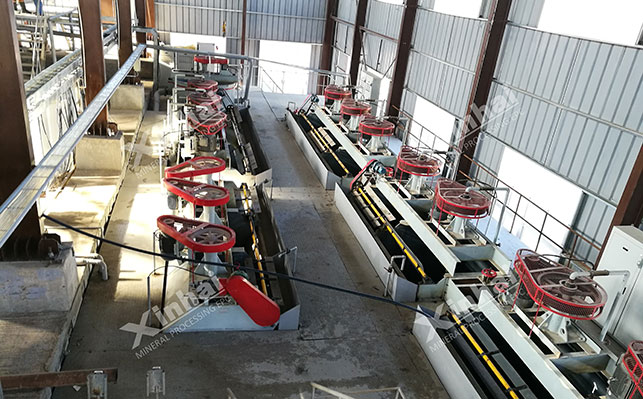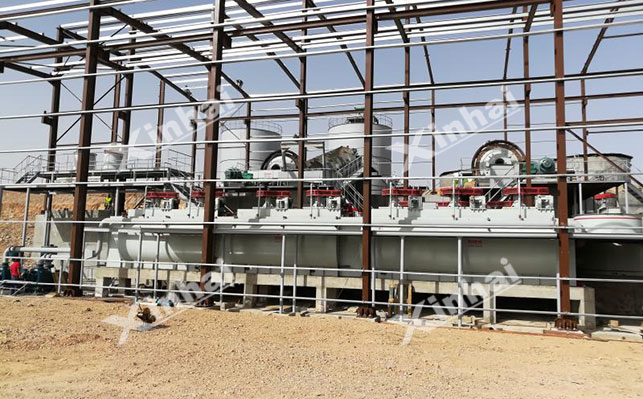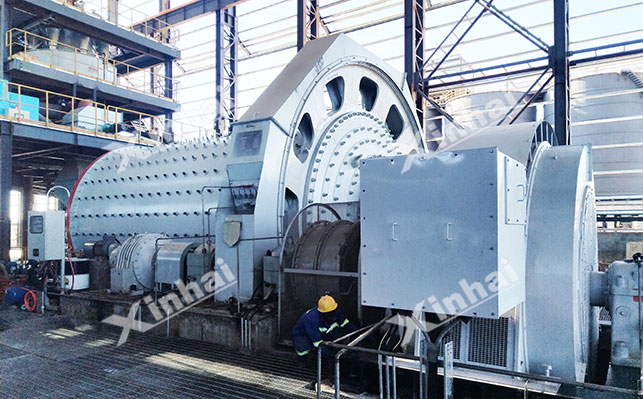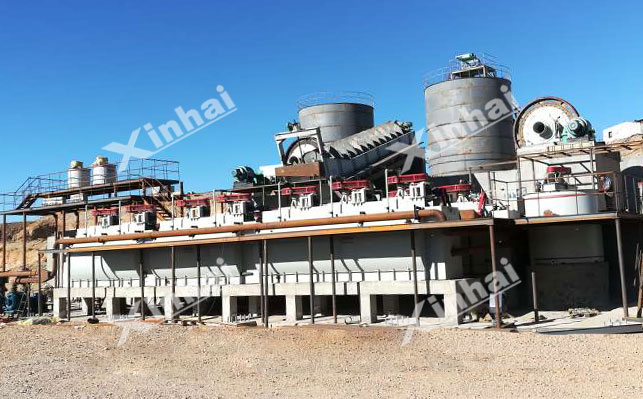
15311826613
Click to add WeChatSilver, as an important precious metal, is used in the fields of electronics, photography, jewelry, currency casting, etc. In addition, silver, as a strategic resource, plays an important role in national economic security and national defense construction. Due to its stable market demand, it provides a solid economic foundation for the mining and processing of silver ore. In terms of mineral processing, flotation is one of its commonly used methods, especially the priority flotation method, which plays an irreplaceable role in the development of silver ore resources with its strong targeting and high recovery rate. This article will introduce the silver ore flotation method and process.

Priority flotation mainly utilizes the difference in floatability of different sulfide ores to achieve selective separation through reagent regulation. In the flotation process, by adding specific reagents, a target mineral (usually a silver-containing mineral or its main carrier mineral) is preferentially captured, while suppressing the floating of other minerals, and then the tailings are treated to float out other target minerals.
Taking the treatment of silver-containing lead-zinc ore as an example, collectors and regulators that can selectively capture lead minerals are generally added first. The regulator can adjust the pH value, ion concentration and other properties of the slurry to create conditions suitable for the floating of lead minerals. In the adjusted slurry environment, the collector selectively adsorbs on the surface of the lead mineral, causing its surface to change from hydrophilic to hydrophobic. When air is introduced into the slurry to form bubbles, the hydrophobic lead minerals adhere to the bubbles and float to the surface of the slurry to form a foam layer. The foam is collected by the scraping device to obtain a lead concentrate containing silver. At this time, other minerals such as zinc minerals remain in the slurry due to inhibition. Subsequently, the lead tailings are activated and reagents that can activate and float zinc minerals are added to achieve the flotation of zinc minerals, and finally complete the gradual separation of lead, zinc and silver.

Preferential flotation method is applicable to a variety of silver ore types. From the perspective of ore composition, when there are fewer complex components that interfere with silver flotation in the ore, such as a single type of gangue minerals and no impurity minerals with similar floatability, this method can effectively avoid flotation interference between minerals, thereby achieving efficient separation of silver minerals. In terms of particle size, coarser-grained silver ores are more suitable for preferential flotation. Larger particles can fully contact and adsorb with the reagent during the flotation process, which is conducive to the hydrophobic transformation of the mineral surface and the attachment of bubbles, thereby achieving separation. From the perspective of grade, the preferential flotation method has obvious advantages for high-grade silver ores. The higher target mineral content can not only ensure that there are enough silver minerals to be recovered during the flotation process, but also reduce the beneficiation cost per unit product. In addition, when there is a significant difference in floatability between different target minerals, the preferential flotation method can make full use of this feature to achieve efficient separation of minerals. For example, in lead-zinc ore with silver, because silver has "lead affinity" and the floatability of galena and other minerals (such as sphalerite and gangue minerals) is significantly different, by preferentially flotating lead ore, silver can be enriched in lead concentrate along with lead, greatly improving the recovery rate of silver.
Grinding and classification: The silver ore is crushed by jaw crusher, cone crusher and other equipment, and then sent to the ball mill to grind to a suitable particle size to fully dissociate the silver minerals from the gangue minerals. The grinding process often forms a closed-circuit grinding with the grading mechanism. After the grading overflow is graded by the cyclone, the unqualified product is returned to the ball mill for re-grinding. The crystal size of silver minerals is mostly between 5-10μm. Grinding does not necessarily require the dissociation of all silver mineral monomers, but mainly the full dissociation of the carrier. However, for some special cases, such as the embedding of fine silver mineral particles, it may be necessary to increase the fine grinding stage.

Slurry adjustment: Add adjusters such as lime and sodium carbonate to adjust the pH value of the slurry, and add dispersants to prevent the sludge from agglomerating and affecting the flotation effect. It should be noted that in the flotation recovery of silver ore, adjusters such as lime and cyanide have an inhibitory effect on silver minerals and should be avoided; the dosage of adjusters such as sodium sulfite, sodium sulfate, starch, etc. should also be strictly controlled, otherwise it will be detrimental to the flotation of silver minerals.
Prioritize the flotation of silver minerals: Add collectors for silver minerals or their main carrier minerals, such as butyl ammonium black medicine, aniline black medicine, ethyl xanthate, butyl xanthate, ethylthiocyanate, thiocarbamate, etc., as well as foaming agents. These collectors can selectively adsorb on the surface of silver minerals, making their surface hydrophobic, and then attach to the bubbles and float to the surface of the slurry. Scrape out these bubbles to obtain silver rough concentrate.
Concentration and scavenging: In order to further improve the grade and recovery rate of silver concentrate, it is necessary to perform concentrating operations on the silver rough concentrate and scavenging the tailings at the same time. The concentration operation further removes impurity minerals in the coarse concentrate and improves the grade of the silver concentrate by adding collectors and frothers multiple times and adjusting the pH value of the slurry. The number of concentrations is usually determined according to the quality of the coarse concentrate and product requirements, generally 2-4 times; the scavenging operation is to re-process the flotation tailings, and recover the residual silver minerals by adding appropriate amounts of collectors and frothers to improve the recovery rate of silver. The number of scavenging operations is generally 1-3 times, and the specific number needs to be adjusted according to the silver content in the tailings and the recovery requirements.

The above is an introduction to the preferential flotation method and process of silver ore. Preferential flotation can minimize the mutual interference in the flotation process of different minerals, and achieve the priority floatation of the target minerals by accurately controlling the reagent system and flotation conditions, thereby producing high-grade silver concentrate. This method has strong flexibility, and the flotation sequence and reagent system can be flexibly adjusted according to the properties of the ore and production needs. Whether it is a single silver ore or a multi-metal associated silver ore, the effective separation and comprehensive recovery of silver and other metals can be achieved by optimizing the process flow.
Xinhai has rich experience in silver mining and has participated in many silver beneficiation projects. If you have any needs, please contact Xinhai customer service. Consultation hotline: 86+15311826613!